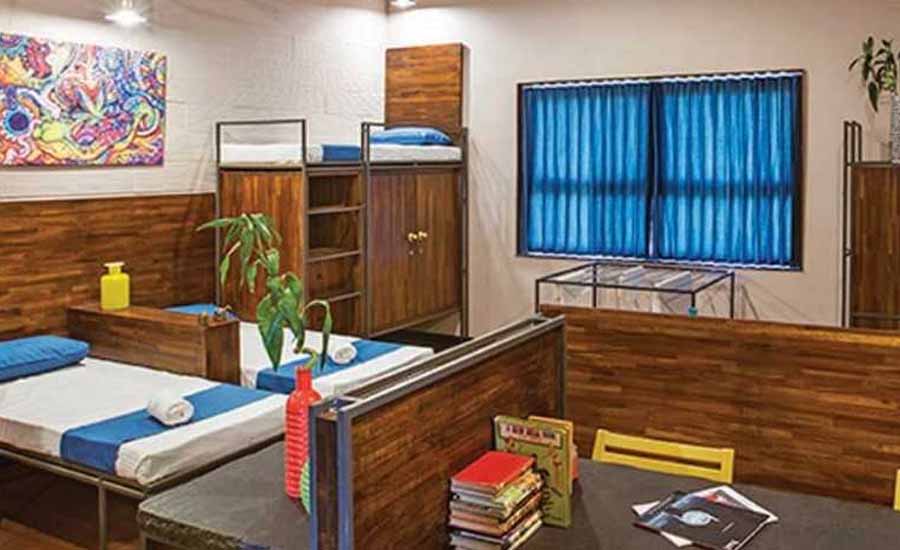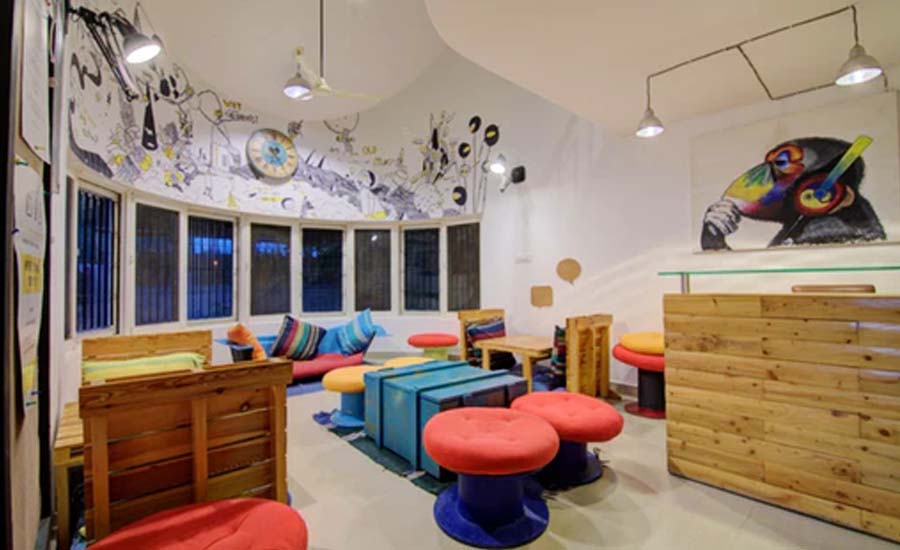Jobs and education opportunities are bringing more and more people to urban centres and gateway cities. India has a sizeable annual influx of rural to urban migration rate which was 4.5% in 2011. Jhong Khei from Manipur moved to New Delhi with an eye on his ambition of studying for the civil services exams as well as to score quality internships during the course. However, there were problems that stood in his way. The major money suction came in the way of living facilities. Property prices are on the rise yet again, and renting charges in the metropolitan cities are quite prohibitive, not to mention an additional layer of expenses in the form of agent commissions, deposits, etc. At that moment of despair, one of his friends suggested him to look for co-living spaces.
Again, it’s the same story with Mumbai resident, fashion stylist Riki Basu. When she wanted to move out of her parental house in Pune and head to the City of Dreams to pursue her dream job, prohibitive pricing and security concerns were major hiccups in her way. It was then that she heard of the co-living spaces as a solution through the office grapevine.
What is Co-living?
Co-living, as a concept, meets the needs of ‘3Cs’ — comfort, convenience, and community — that traditional living categories do not support. Co-living spaces are equipped with complete furnishing details and also include cleaning and maintenance services. Here, the tenants are required to deal with a single operator taking care of all facilities related to the living quarters instead of paying in various segments like deposits, utilities, furniture, and agent commission fees.
Now, the co-living business model can vary significantly due to different lease structures and ownership models. There are co-living operators who are performing with light assets where they work either from a profit-sharing lease point of working or with the management agreement.
On the other hand, other co-living operators prefer fixed market-based leases where they can guarantee landlords a fixed income over a longer period. Since co-living business models involve multitude clientele, there remains the ability to scale operations, hence, co-living operators can potentially provide higher incomes to property owners. Besides, they even deliver efficiently around services like cleaning, furniture, and utilities.

Although the co-living sector is still in its early stages of development in most parts of Asia Pacific, it is predicted that it will evolve to appeal to a larger and broader tenant base over time. According to reports, India’s co-living space market will grow 20 times and will be worth $2 billion by 2022. Delhi-based co-living startup CoHo pegs the co-living market at $10 billion.
Co-living spaces generally come with fully furnished interiors, with Wi-Fi, cleaning, cooking services and security installations. The services are either managed through apps or a single manager, which lets tenants pay rent as well as make requests or file complaints to the operators. Co-living space operators also foster a sense of community by organising events or meet-ups for tenants.
The millennial population is happily driving the demand for co-living spaces. The set-up essentially involves residents sharing kitchens, bathrooms and living areas while the owners offer a range of services through the most accessible and omnipresent concept of young life today—apps.
The Growth Story of Co-living Spaces in India
In terms of Indian cities, co-living spaces are gaining rapid momentum in delivering services as well as in finding eager customers. The low availability of student and new-income group accommodation when coupled with the ever-increasing market size, is a huge draw for corporate developers as well as start-ups. In fact, the co-living space segment has attracted institutional investors and venture capital firms, with the likes of Goldman Sachs and Warburg Pincus investing in the sector.
Real estate prices and the younger generation’s lack of commitment towards owning houses results in increasing the demand for renting. Now, the age-old paying guest tradition can no longer hold the attention of the millennial expectations that are run by the landlord in their own premises. Students and young professionals are rather looking at high quality, modern and affordable living spaces.
A 2018 survey showcased 72% of people gave co-living spaces a thumbs-up and over 55% of these were in the 18-35 years age bracket. The survey, which covered major cities, found preferred rentals included the brackets ₹ 10,000 to 15,000, while proximity to work and community infrastructure remained the top priority for the millennials.
Co-living is an interesting opportunity to standardise the rental housing market, many international brands are teaming up with Indian names such as, Lemon Tree, Oyo Rooms, etc. in the cities of Bengaluru, Pune, Delhi NCR, etc. by renting apartment blocks, and leasing beds with amenities and services such as electricity, housekeeping, and meals.

Quite a few start-up companies have started off the block to create awesome co-living spaces in India. Although most of these initiatives are in the south, west and northern part of the country, Kolkata is also expected to join the race soon. We expect that modern co-living space will somewhat replace the age-old paying guest (PG) accommodations in Kolkata too.
Challenges
Co-living space operators also face certain challenges while doing business in a country like ours with certain typical limitations. First, the residential yields in the country are quite low. Therefore, it becomes essential to use space efficiently and also manage to offer a hassle-free experience.
Second, compared to other thriving markets for co-living spaces such as Hong Kong, Singapore, etc. the customer spending power is lower.
Why the Preference?
Whether young professionals or students, they are often affected by the rigorous and sometimes biased mindset and decisions of landlords and agents. The nexus that has been driving the rental housing market often make their own rules that decide the segment of tenants that are allowed and those that are banned. Add to this, the arbitrary policies and overbearing supervision regarding curfews, non-admission of friends and family, food habit preferences, etc. and a young adult is left with a very frustrating living atmosphere. In addition to it, rental deposits ranging from 5 to 10 months are an impossible burden for tenants who are starting their careers or depend on parents for their finances.
In this mess of unfair demands and non-standard living conditions, co-living spaces are making their mark. Co-living space operators are offering comfortable and trendy dwellings with clear pricing policies and managed services, that too in a collegiate atmosphere with a community feeling.
In short, the millennials are considering the cost factor, ease of living, a sense of community, safety, and lifestyle choices while preferring co-living spaces.
Riki and Jhong Khei are now living in an organised, shared-living arrangement which means that they no longer have to deal with troublesome owners, high deposits or the bother about furnishing. If they have any issues in their co-living space they simply raise a request through the app or contact their operator provided manager and things are taken care of immediately. After co-working changed the traditional office, it is time for co-living spaces to be the next big trend.






